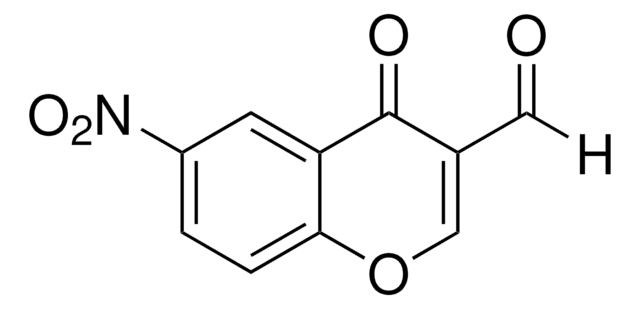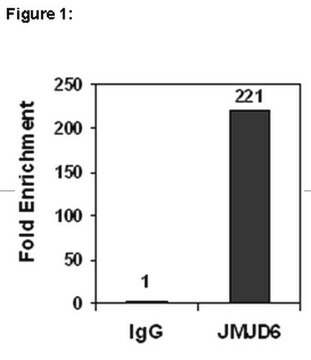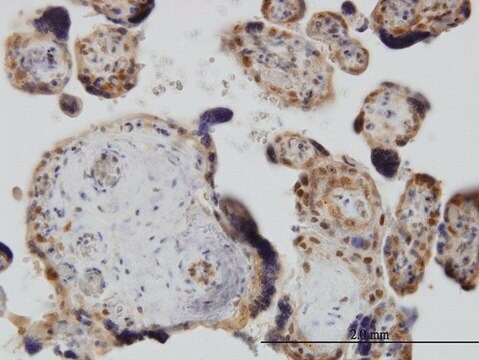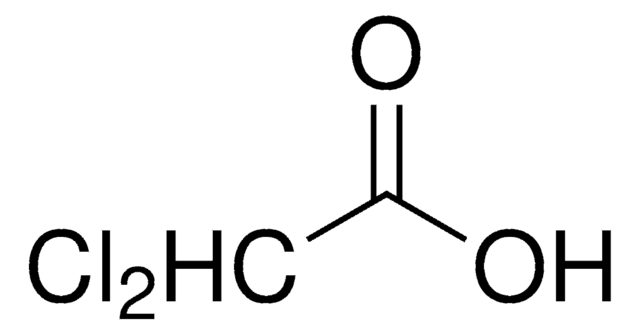17-10262
ChIPAb+ JMJD1C - przeciwciało z walidacją ChIP i zestaw starterów
from rabbit, purified by affinity chromatography
Synonim(y):
Chip przeciwciała i zestaw starterów, JMJD ChIP, JMJD, jumonji domain containing 1C, thyroid receptor interacting protein 8, probable JmjC domain-containing histone demethylation protein 2C, thyroid hormone receptor interactor 8, Thyroid receptor-interacting protein 8, Jumonji domain-containing protein, domena jumonji zawierająca 1C ChIP
About This Item
Polecane produkty
pochodzenie biologiczne
rabbit
Poziom jakości
forma przeciwciała
affinity purified immunoglobulin
klon
polyclonal
oczyszczone przez
affinity chromatography
reaktywność gatunkowa
human
reaktywność gatunkowa (przewidywana na podstawie homologii)
chimpanzee (based on 100% sequence homology), orangutan (based on 100% sequence homology), rhesus macaque (based on 100% sequence homology), rabbit (based on 100% sequence homology)
producent / nazwa handlowa
ChIPAb+
Upstate®
metody
ChIP: suitable
immunocytochemistry: suitable
western blot: suitable
numer dostępu NCBI
numer dostępu UniProt
Warunki transportu
dry ice
informacje o genach
human ... JMJD1C(221037)
Opis ogólny
The ChIPAb+JMJD1C set includes the JMJD1C antibody, a Normal Rabbit IgG, and control primers which amplify a 110 bp region of ChIP Primers, human β-globin. The JMJD1C and negative controls are supplied in a scalable "per ChIP" reaction size and can be used to functionally validate the precipitation of JMJD1C -associated chromatin.
Immunogen
Zastosowanie
Representative lot data.
Sonicated chromatin prepared from HeLa cells (1 X 10E6 cell equivalents per IP) were subjected to chromatin immunoprecipitation using 1.4 µg of either Normal Rabbit IgG or Anti-JMJD1C and the Magna ChIP® A Kit (Cat. # 17-610). Successful immunoprecipitation of JMJD1C associated DNA fragments was verified by qPCR using ChIP Primers, human β-globin as a positive locus, and β-actin promoter primers as a negative locus. (Figure 2). Data is presented as percent input of each IP sample relative to input chromatin for each amplicon and ChIP sample as indicated.
Please refer to the EZ-Magna ChIP A (Cat. # 17-408) or EZ-ChIP (Cat. # 17-371) protocol for experimental details.
Western Blot Analysis:
Representative lot data.
HeLa nuclear extract was probed with Anti-JMJD1C (1 μg/mL). Proteins were visualized using a Donkey Anti-Rabbit IgG secondary antibody conjugated to HRP and a chemiluminescence detection system.
Arrow indicates JMJD1C (~284 kDa). (Figure 3).
Immunocytochemistry Analysis:
Representative lot data.
Confocal fluorescent analysis of HeLa cells using Anti-JMJD1C (Red). Actin filaments have been labeled with Alexa Fluor 488 dye -Phalloidin (Green). Nucleus is stained with DAPI (Blue). This antibody positively stains the nucleus. (Figure 4).
Epigenetics & Nuclear Function
Histone Modifying Proteins
Opakowanie
Jakość
Representative lot data.
Sonicated chromatin prepared from HeLa cells (1 X 10E6 cell equivalents per IP) were subjected to chromatin immunoprecipitation using 1.4 µg of either Normal Rabbit IgG, or Anti-JMJD1C and the Magna ChIP® A Kit (Cat. # 17-610).
Successful immunoprecipitation of JMJD1C associated DNA fragments was verified by qPCR using ChIP Primers, human β-globin (Figure 1).
Please refer to the EZ-Magna ChIP A (Cat. # 17-408) or EZ-ChIP (Cat. # 17-371) protocol for experimental details.
Opis wartości docelowych
Postać fizyczna
Concentration: 0.7 mg/mL
Normal Rabbit IgG. One vial containing 125 µg of Rabbit IgG in 125 µL of storage buffer containing 0.05% sodium azide. Store at -20°C.
ChIP Primers, human β-globin. One vial containing 75 μL of each primer (5 μM) specific for the human β-globin
promoter. Store at -20°C.
FOR: AGG ACA GGT ACG GCT GTC ATC
REV: TTT ATG CCC AGC CCT GGC TC
Przechowywanie i stabilność
Note: Variability in freezer temperatures below -20°C may cause glycerol containing solutions to become frozen during storage.
Komentarz do analizy
Includes normal rabbit IgG and primers specific for human β-globin.
Inne uwagi
Informacje prawne
Oświadczenie o zrzeczeniu się odpowiedzialności
Kod klasy składowania
10 - Combustible liquids
Certyfikaty analizy (CoA)
Poszukaj Certyfikaty analizy (CoA), wpisując numer partii/serii produktów. Numery serii i partii można znaleźć na etykiecie produktu po słowach „seria” lub „partia”.
Masz już ten produkt?
Dokumenty związane z niedawno zakupionymi produktami zostały zamieszczone w Bibliotece dokumentów.
Nasz zespół naukowców ma doświadczenie we wszystkich obszarach badań, w tym w naukach przyrodniczych, materiałoznawstwie, syntezie chemicznej, chromatografii, analityce i wielu innych dziedzinach.
Skontaktuj się z zespołem ds. pomocy technicznej








